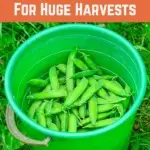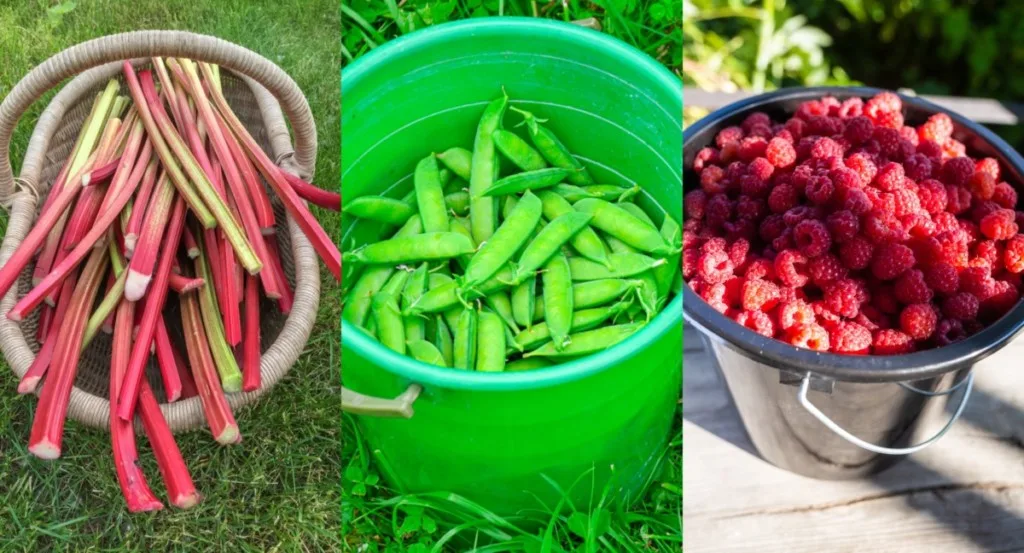
Measuring yield can be a great way to determine success in your garden. Growing high-yielding fruits and vegetables can help us maximise the size of our harvests.
But there are a number of different ways to measure yield over the course of the growing season and over the long term.
We might measure yield in terms of overall weight, calories obtained, nutrients derived from each crop, etc.. How we measure yield will dictate which fruits and vegetables are considered to be high-yielding.
In this article, I’ll talk about 35 high yielding fruits and vegetables. I’ll share my experiences of growing these things, and discuss why I consider them to be amongst the highest-yielding crops that grow in my garden.
Your experiences of growing where you live may not be quite the same. But you may be able to use my experiences to help you plan what to sow and grow where you live.
High Yielding Perennials
The first thing to consider when thinking about yield is whether you will be growing perennials or annual crops. Here’s an article explaining the difference.
Perennials can be among the highest yielding crops – not only over the course of one season, but over several years to come. They can be among the best value crops to add to your garden.
On my property, I have an orchard/ forest garden. I also have a polytunnel, and annual growing areas. But the bulk of the yield I achieve comes from the forest garden portion of the property.
Here are ten of the most productive elements in this part of my garden:
Fruit Trees
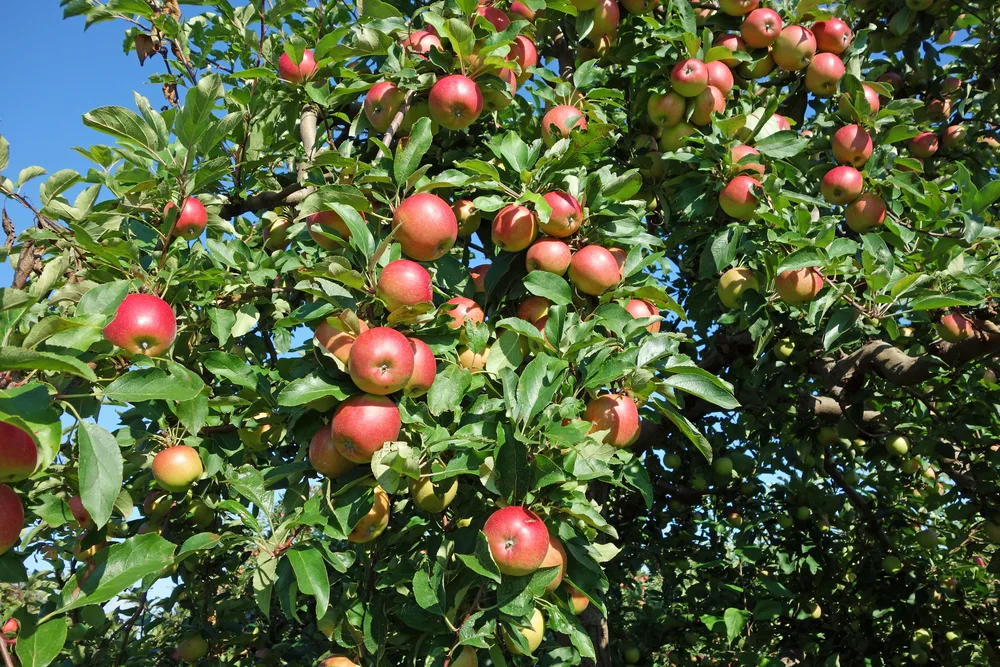
If I could recommend just one plant for any new home grower, I would suggest planting a fruit tree. Choosing a fruit tree suitable for your area is my number one suggestion for a high yield.
A fruit tree may not have a particularly high yield in its first year. But over time, it can just become more and more abundant.
And the great thing about a fruit tree is that you can grow one even in the smallest of spaces. Dwarf fruit trees are available, and you can even grow these in containers.
You can also train trees to grow up against a wall or fence to make the most of peripheral spaces.
Where I live, apple and plum trees are very productive. Looking at the plum blossom on the trees right now reminds me of the high yield that I can likely expect later in the year. Our apple trees are just bursting into leaf. These too will offer a high yield in September and October.
Yields to Expect from Mature Fruit Trees
Here are just a few examples of the yields that you can expect from a mature fruit tree:
1. Apple – 480- 690 lbs per mature standard tree.
2. Plum – 165 – 330 lbs per standard tree.
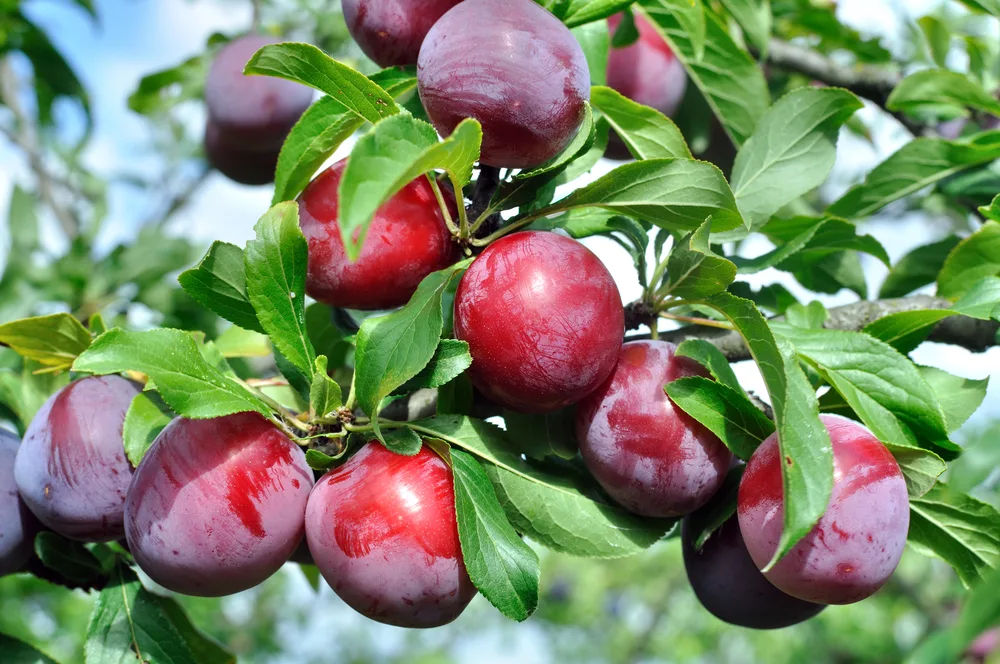
3. Pear – 192- 288 lbs per standard tree.
4. Apricot/ Peach/ Nectarine – 144-288 lbs per standard tree.
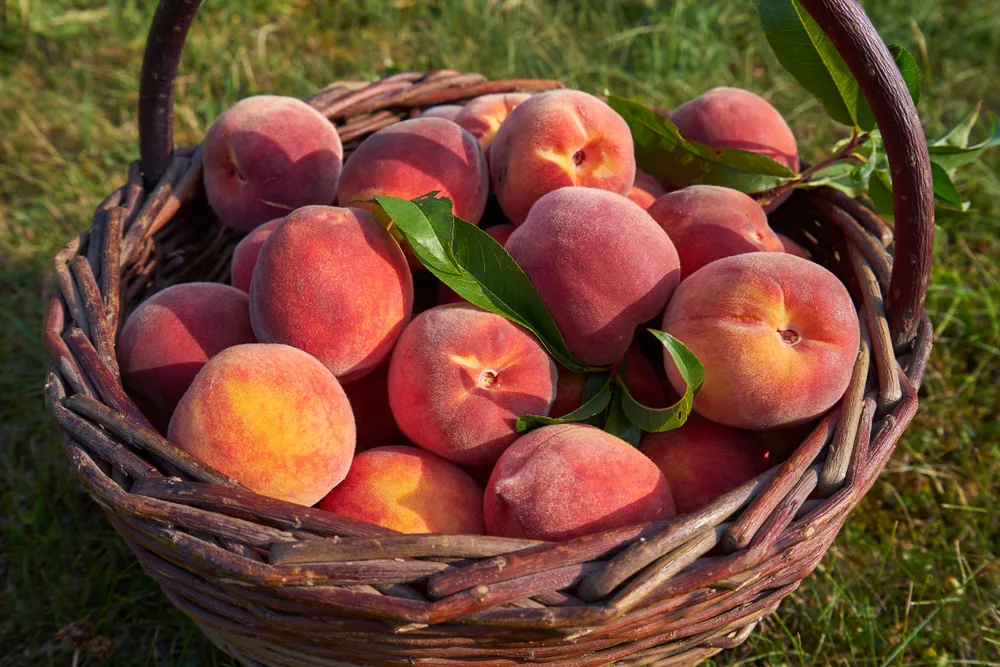
5. Cherry – c.135 lbs per standard tree.
Of course, the exact yield you achieve will depend on the variety or varieties you choose. It will also depend on your climate and the conditions in your garden and, to a certain extent, on your skills as a gardener.
Fruit Bushes & Fruiting Canes
Fruit bushes and fruiting canes can also provide a surprisingly high yield from a surprisingly small amount of space. For example:
6. Blackberry plant
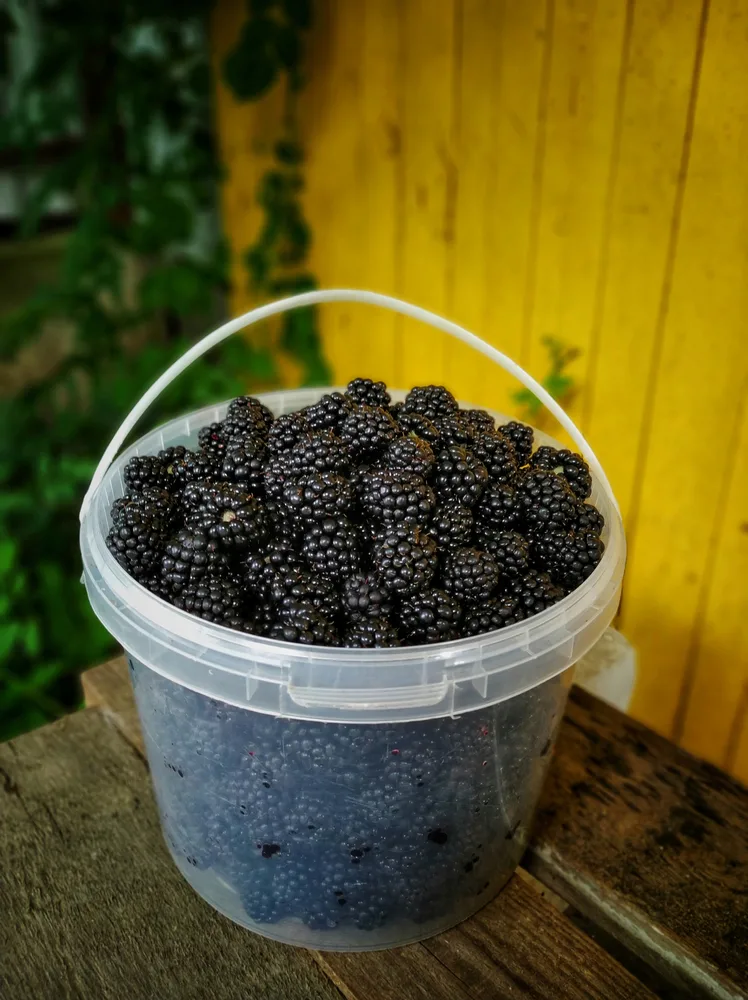
A single blackberry plant can yield up to 10-20 lbs of fruit.
7. Currant bushes
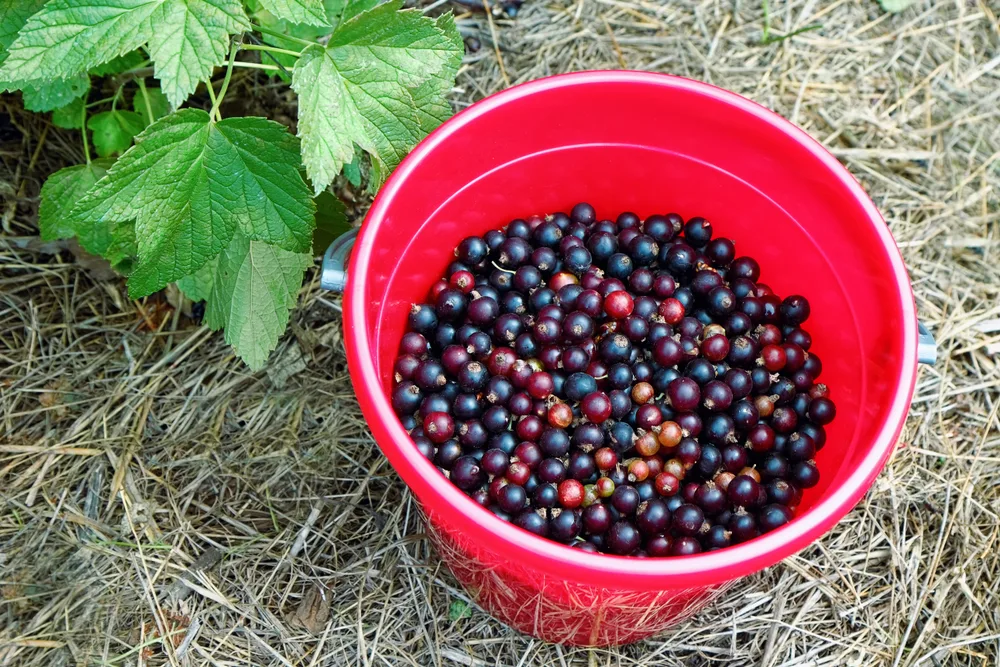
Red, black, white or golden currants can each yield around 4.5-11 lbs of fruit. And gooseberry bushes also offer a comparable yield in terms of weight, perhaps even more.
8. Raspberries
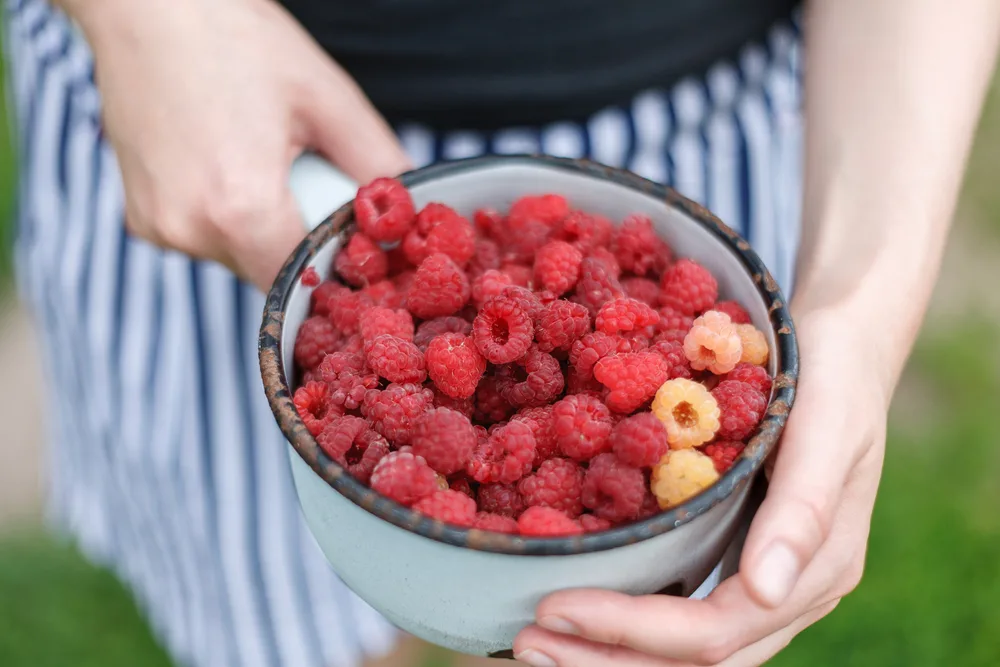
Can yield between 2 and 6 lbs of fruit per cane during their fruiting season. Prune them correctly to increase yield.
It is also worth remembering that with their relatively high sugar content, fruits can provide a lot more calories than leafy greens and vegetable crops. As well as measuring yield by weight, it can also be useful to measure yield in terms of the calories a plant can provide for you and your family.
Measuring yield in terms of calories, a single mature apple tree could provide between 113,280 and 162,840 calories each year!
In a smaller space, a single blackberry plant could provide between 1,950 and 3,900 calories, a single currant bush 1080-2640 calories, and a single raspberry cane 480-1448 calories.
Herbaceous Perennials
Leafy green perennials obviously cannot provide as high a yield as the above in terms of weight or calories. (There are, very roughly, 100 calories per pound in leafy greens.) However, yield should not just be measured in these terms.
Obviously, we humans need a wide range of nutrients to stay healthy. It is important that we grow a wide range of leaf vegetables in order to meet all of our dietary needs.
Growing perennial vegetables, herbs and other edible plants can help us increase the yield of the edible crops we are able to grow. By choosing some perennial options, as well as annual ones, we can increase the amount we can grow in a given area, and ensure a yield not only over one year, but for years to come.
Top picks for high-yielding perennial vegetables/ herbs/ edible crops include:
9. Rhubarb
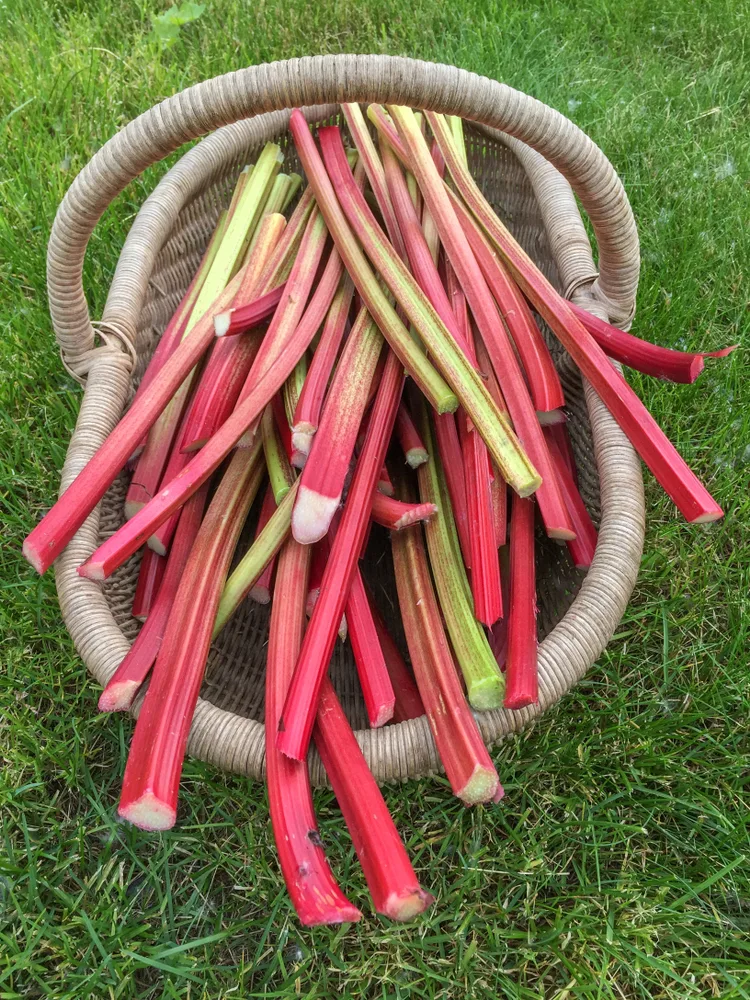
10. Stinging Nettles
Commonly considered a weed, stinging nettles can be cooked and eaten in a range of delicious recipes. Here’s a favorite nettle soup recipe.
11. Perennial brassicas (everlasting cabbage, Daubenton’s kale etc..)
12. Good King Henry or fat hen, or similar.
13. Hostas – you can eat the early shoots and the summer blooms.
14. Chickweed
15. Perennial alliums (elephant garlic, bunching onions, wild leek etc..)
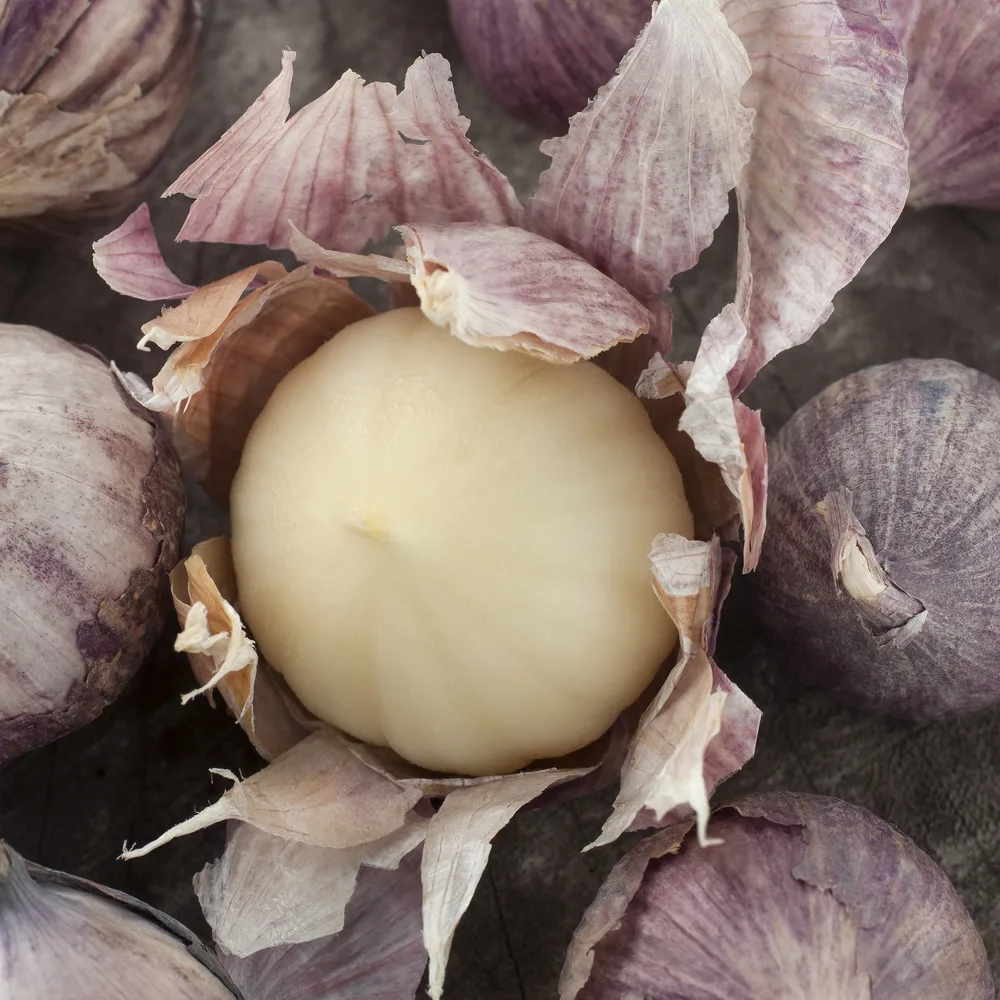
Though of course, these are just a few examples. These are options that grow prolifically and deliver high yields where I live. But you may find that other plants do far better in the climate and conditions of your own particular garden.
High Yielding Annual Crops
I would highly recommend that you grow at least some perennials to achieve a high yield from your garden. However, you can also maximise the yield you get from an annual vegetable garden by choosing the right crops.
Below, you will find my recommendations for high yielding fruits and vegetables to grow in your garden. But before we get onto those, let’s take a brief look at what we mean when we talk about a high yielding crop.
As mentioned above, looking at yield often means looking at:
- The weight of the harvest.
- Calorific content of the crop.
- The nutritional content of the harvest.
However, it is important to remember, when measuring yield, that we should look not only at what comes out, but also at what goes in. It is important to consider what is required in terms of:
- Land (How much space a crop takes up when growing).
- Water (How much water a crop requires to grow.)
- Your energy (And the effort that must be expended to grow your crops.)
Taking all of these things into account, here are the annual crops that I believe give the biggest ‘bang for the buck’:
16. Potatoes
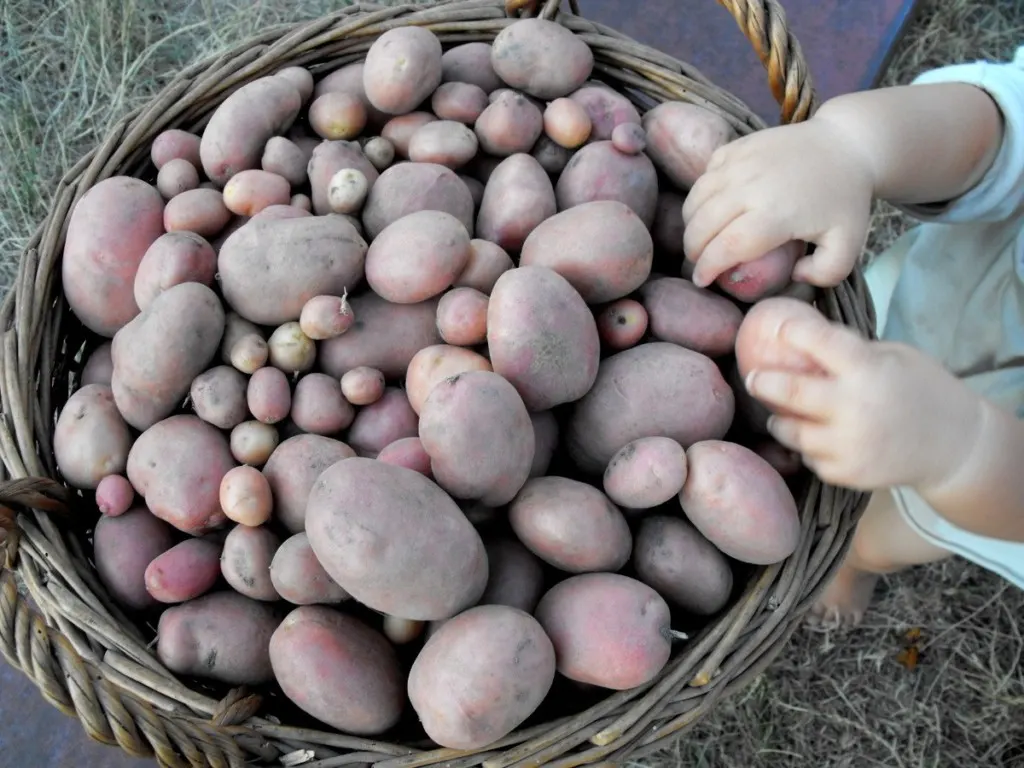
Potatoes are a bulky and moderately calorific staple that can take a rather large area of land but relatively little effort to grow.
The weight and quality of the harvest can definitely make potatoes worthwhile growing in your garden.
This is definitely a high yielding plant, which can form an important part of a temperate climate diet. Compared to other carbohydrate rich foods, like grains, potatoes do take up less space, and are easier to manage in a domestic garden or on a homestead.
17. Beets
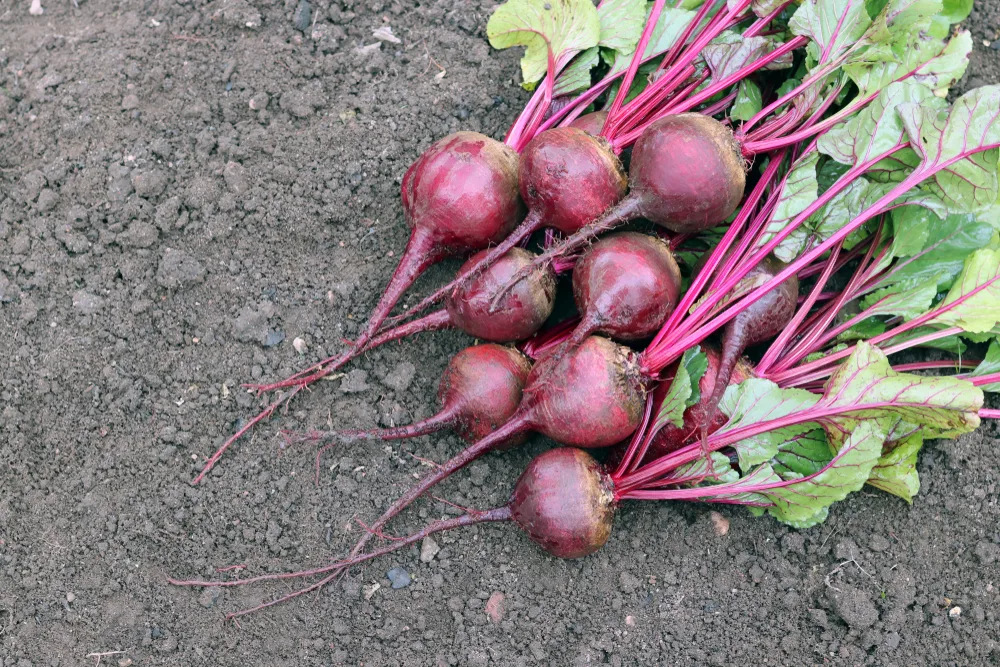
Depending on your area and soil type, root vegetables can also be high yielding crops. Beets are one excellent example.
You can grow quite a lot of them in relatively small spaces, especially if you eat baby beets as you thin out your young plants. This gives a higher yield, and also gives the other plants still in the ground the chance to grow much larger over time.
18. Carrots
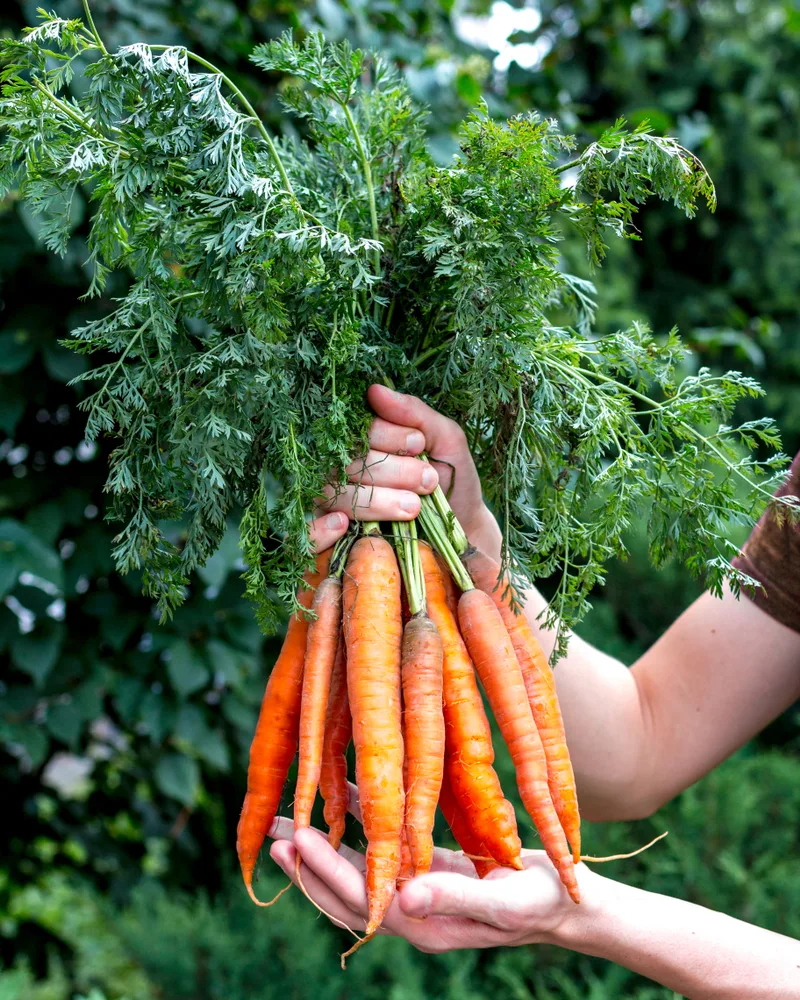
Carrots are another root crop that can offer high yields in the right locations. Like beets, they can also be grown in relatively small spaces, or even in containers. They can help you make the most of every inch of your garden.
And when grown in the right conditions, can provide a big harvest over a long period – especially when you plant successionally over the course of the growing season.
19. Turnips
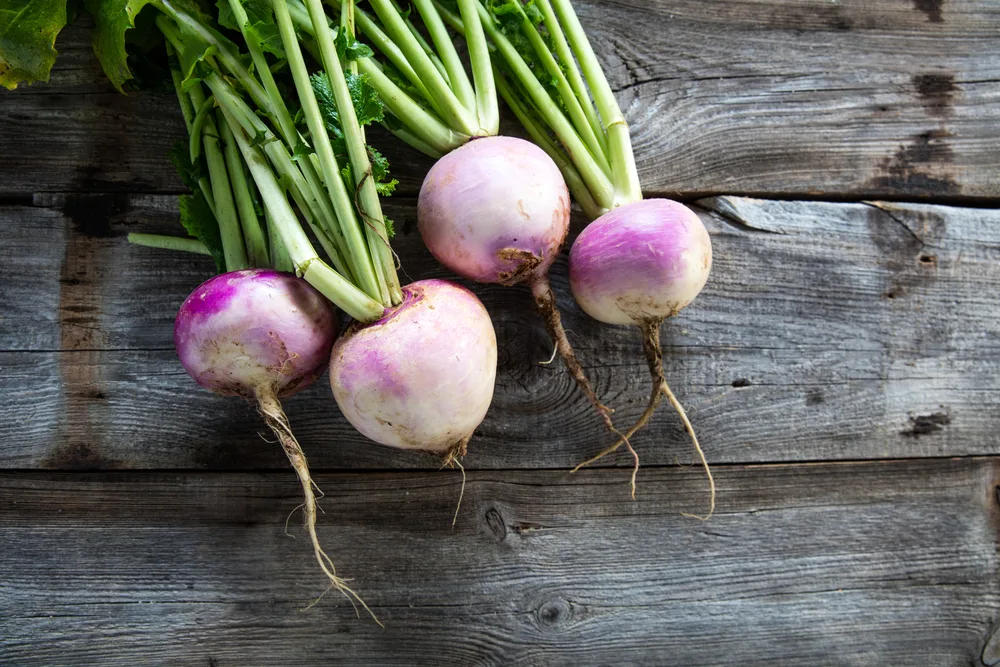
Turnips are another root crop that can offer rather high yields. And like beets and carrots, these can also be grown over a long period – perhaps even over the winter months with some protection.
Another thing to remember is that you can also have a secondary yield from turnips, in the form of the leafy greens. (The same is also true of beets, and a number of other root crops.)
20. Radishes
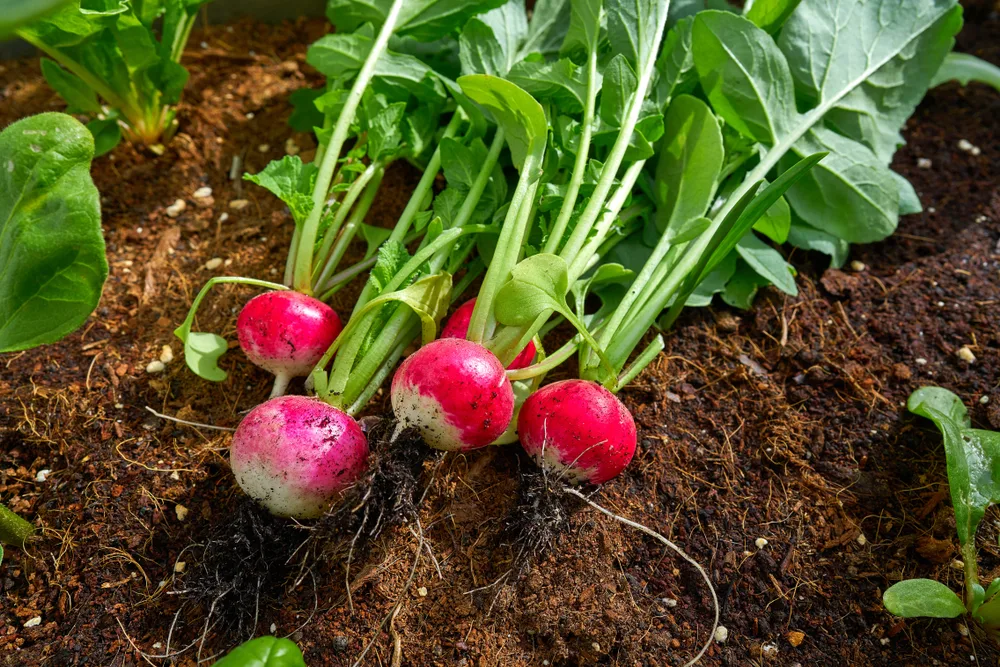
Radishes are great for companion planting, intercropping, and making the most of small spaces. They grow very quickly and so can be sown and grown successionally throughout the year for a higher overall harvest than you might imagine.
Another thing to bear in mind about radishes is that if you let some go to seed, you can also get an abundant yield of edible radish seed pods.
Potentially, rather than just getting one root radish, you can get hundreds of crunchy, mildly radish-flavored seed pods from just one plant.
21. Lettuce
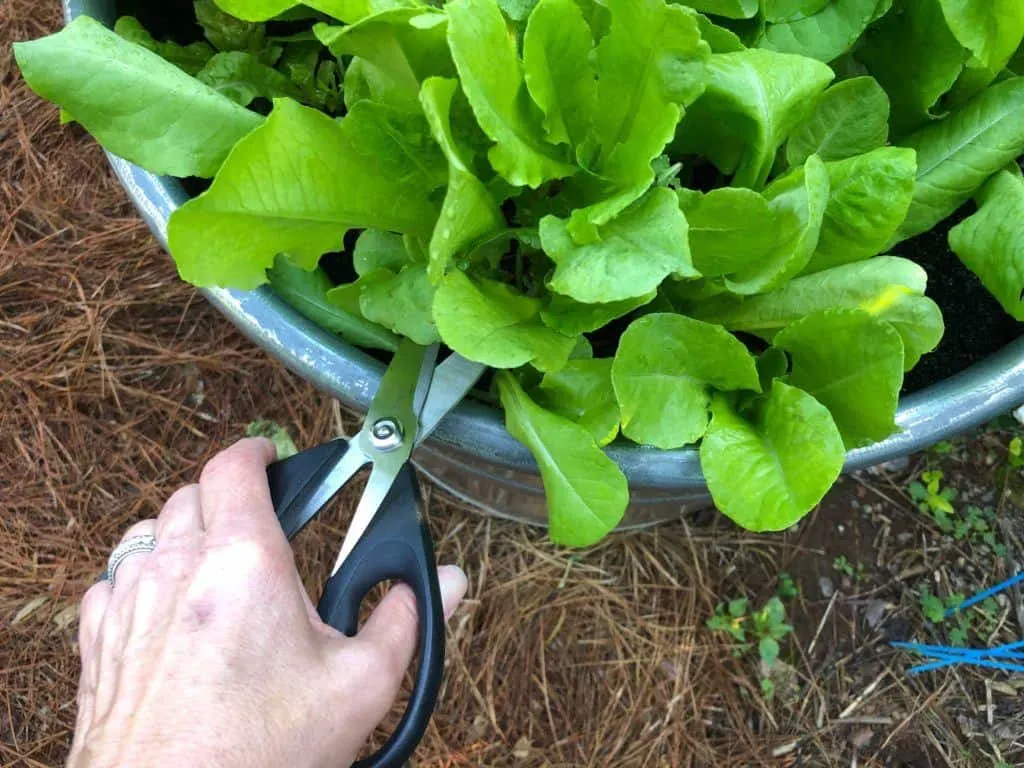
Lettuce is another very fast growing crop that takes up very little space and can potentially offer a high yield little and often over a long period.
Cut and come again varieties allow you to make the most of containers or small growing spaces. And by choosing the right lettuces for your area and climate, you can potentially get a lettuce yield all year round.
Related Reading: How To Grow Cut & Come Again Lettuce
22. Pak Choi
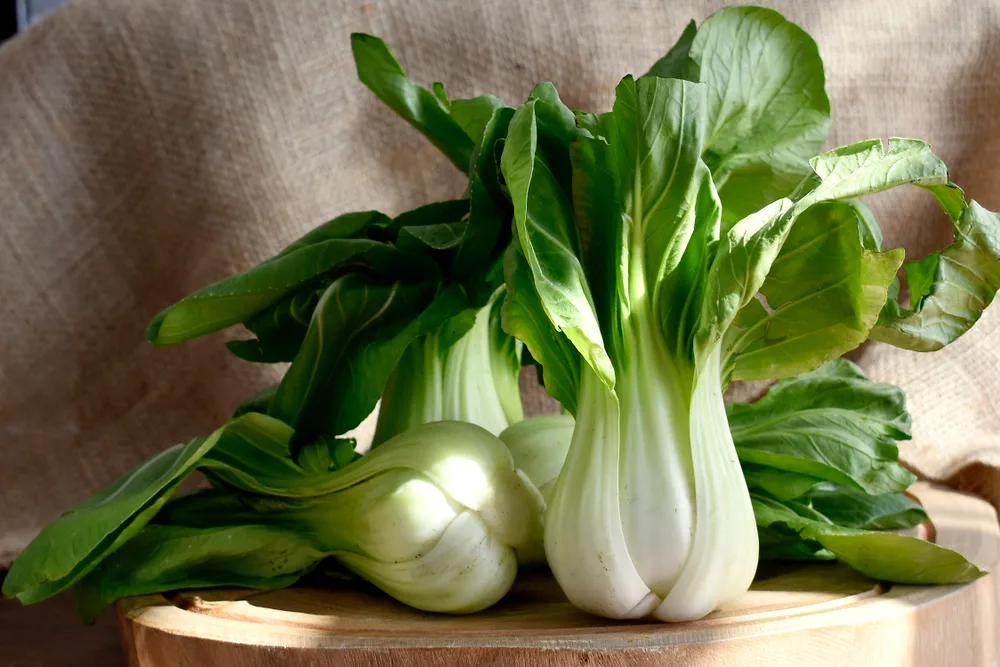
Leafy greens like lettuce obviously won’t offer a high yield in terms of calories or weight. But they can offer a nutrient rich yield over a long period of time.
And as mentioned above, they can be grown quickly, with little land, and with minimal effort on your part.
One leafy green that I find grows very well where I live is pak choi (or bok choy). I often find that I have more than I need for spring and summer stir fries and salads. I can even grow it in my polytunnel all through the winter months, which increases my annual yield overall.
Read Next: 10 Ways To Use Bok Choy That’s Not A Stir Fry
23. Arugula
Arugula is another leafy green vegetable that grows abundantly and crops prolifically where we live. This is another great value salad crop that can give you great nutritional yields for relatively small spaces.
24. Mustard Greens
Salads definitely don’t have to be boring. There are a great many leafy greens that are high yielding and can enliven your salads throughout all the seasons. Mustard greens are another small space crop that can grow quickly and offer great value for money and space.
25. Mizuna and Mibuna
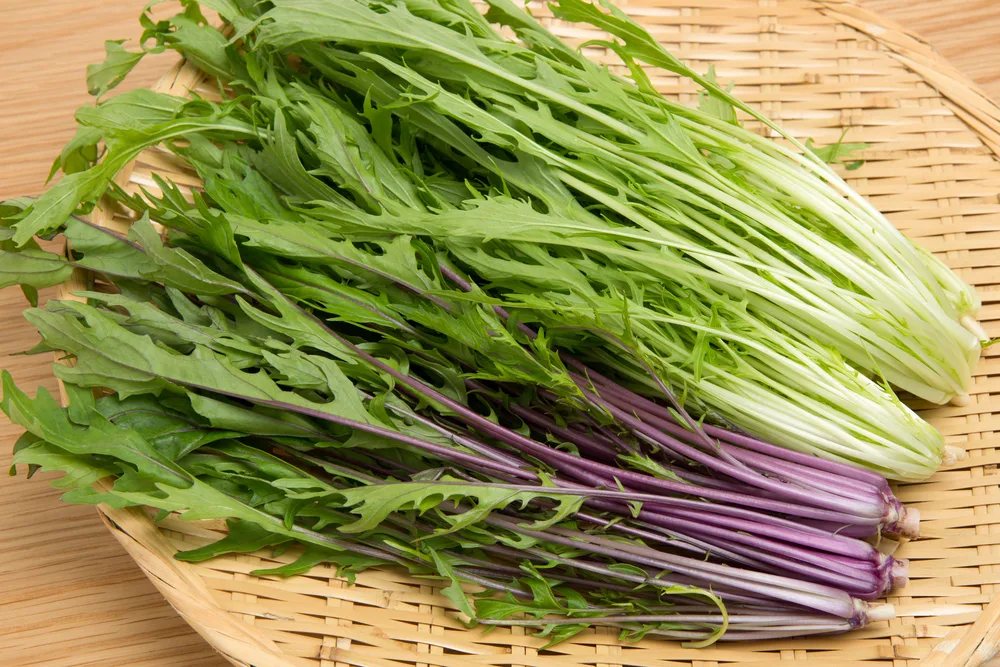
Mizuna and mibuna are Asian green vegetables that can also be great high yielding crops for your vegetable garden.
I grow them in my polytunnel almost all year round, and find that they provide an abundant and reliable crop all through winter when there is less food around.
26. Chard
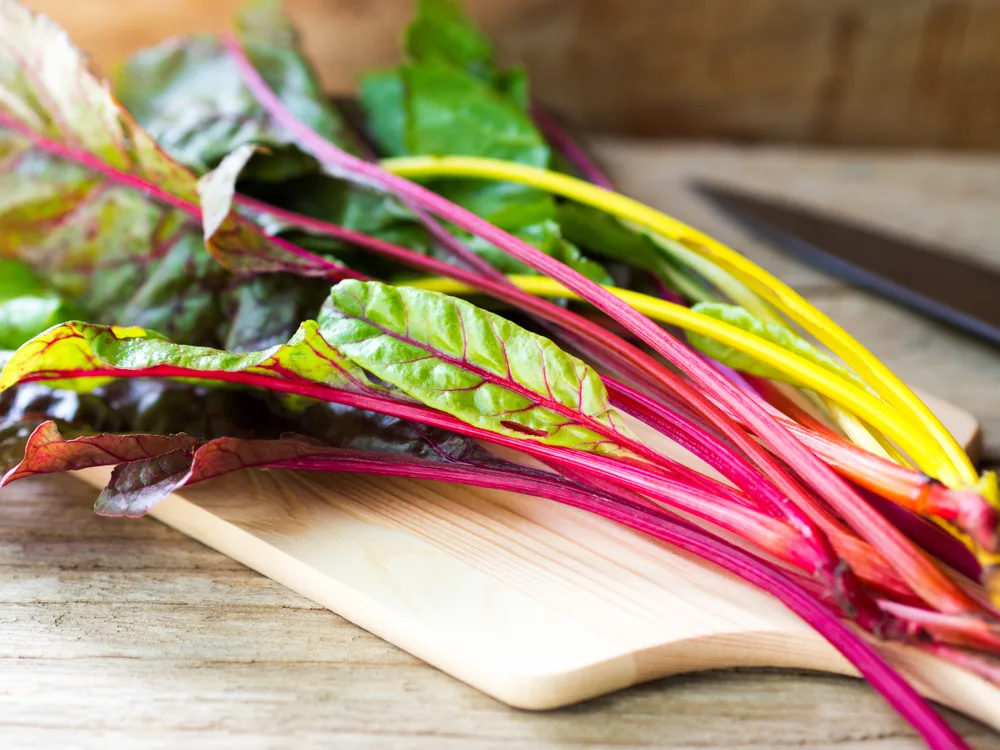
Chard is another of my favourite high-yielding leafy greens. I grow it in my polytunnel in winter, and outdoors and in containers throughout the year. This nutritional powerhouse grows very well in my climate, and can offer healthy leaves for salads and cooked recipes throughout the year.
27. Spinach
Though prone to bolting during the summer months, quick growing spinach can also offer a high yield of delicious leafy greens. It can be grown in a wide range of conditions and is another great choice for even the smallest of spaces.
Grow it between and beneath other crops to provide it with summer shade and to increase the overall yield from a growing area.
28. Kale
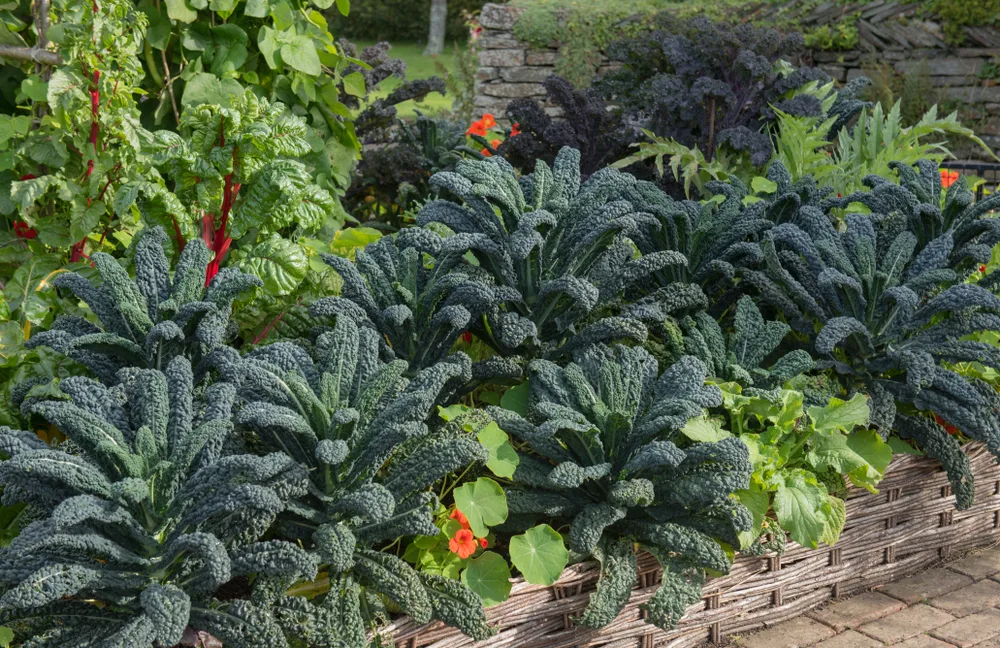
Common brassicas like cabbages, broccoli, cauliflower and kale can take up more space than other leafy greens. But in terms of nutrition and how prolifically they leaf, kale in particular can be a great high yielding choice for your garden.
I grow kale year round and just a few plants are generally enough to provide year round leafy greens for most families’ needs.
29. Kohlrabi
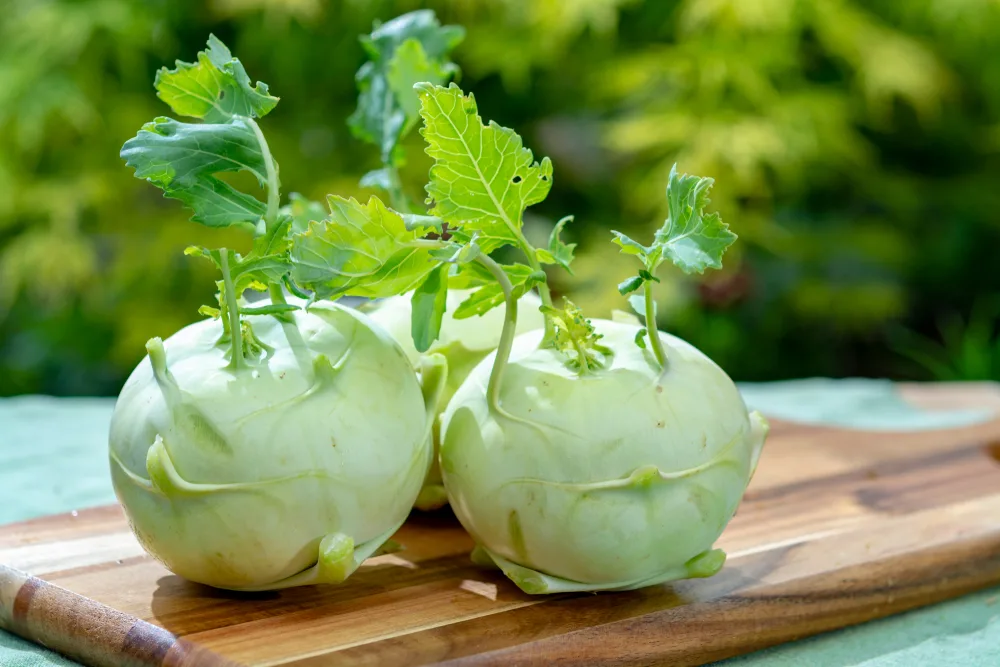
Another top pick from the brassica family is one which takes up less space than the options mentioned above.
Kohlrabi is less well known than many other members of the cabbage family, but planted relatively close together, these plants can provide a high yield in a relatively small space. The bulbous stems and leaves can be eaten raw or cooked.
30. Shallots
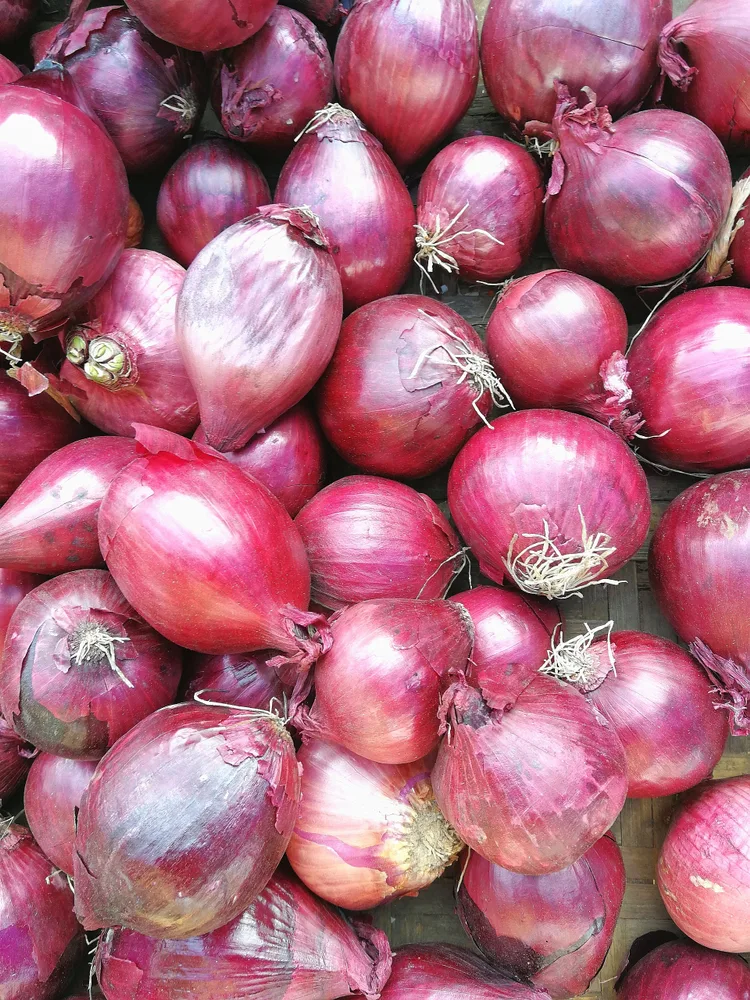
Alliums are also good choices to increase yield in relatively small spaces. You can grow traditional onions, scallions, garlic etc.. But instead of, or in addition to, growing these things, consider growing shallots.
Shallots don’t just grow one bulb from one set or seed. Instead, they divide to provide a number of bulbs for each plant. So your overall yield could be a lot higher than it could be with these other plants in the onion family.
31. Peas
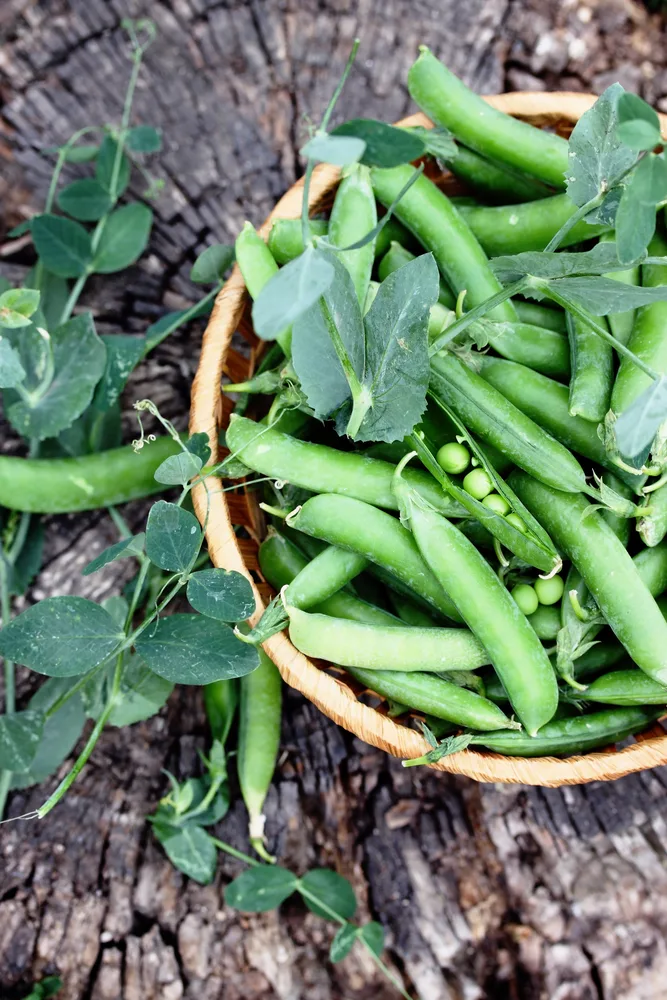
Peas are one of my favorite high yielding garden plants. They do rather well where I live, and I plant them successionally for crops throughout a large portion of the year.
No matter which types and varieties you grow, you can generally get an abundant harvest even from a relatively small number of plants.
My top tip is to grow some peas for pods (mange tout), some for sugar snap (from which you eat the pods and seeds) and some for shelled peas to eat fresh or dry. Remember, you can eat pea shoots too. They have a delicate pea flavor.
32. Beans
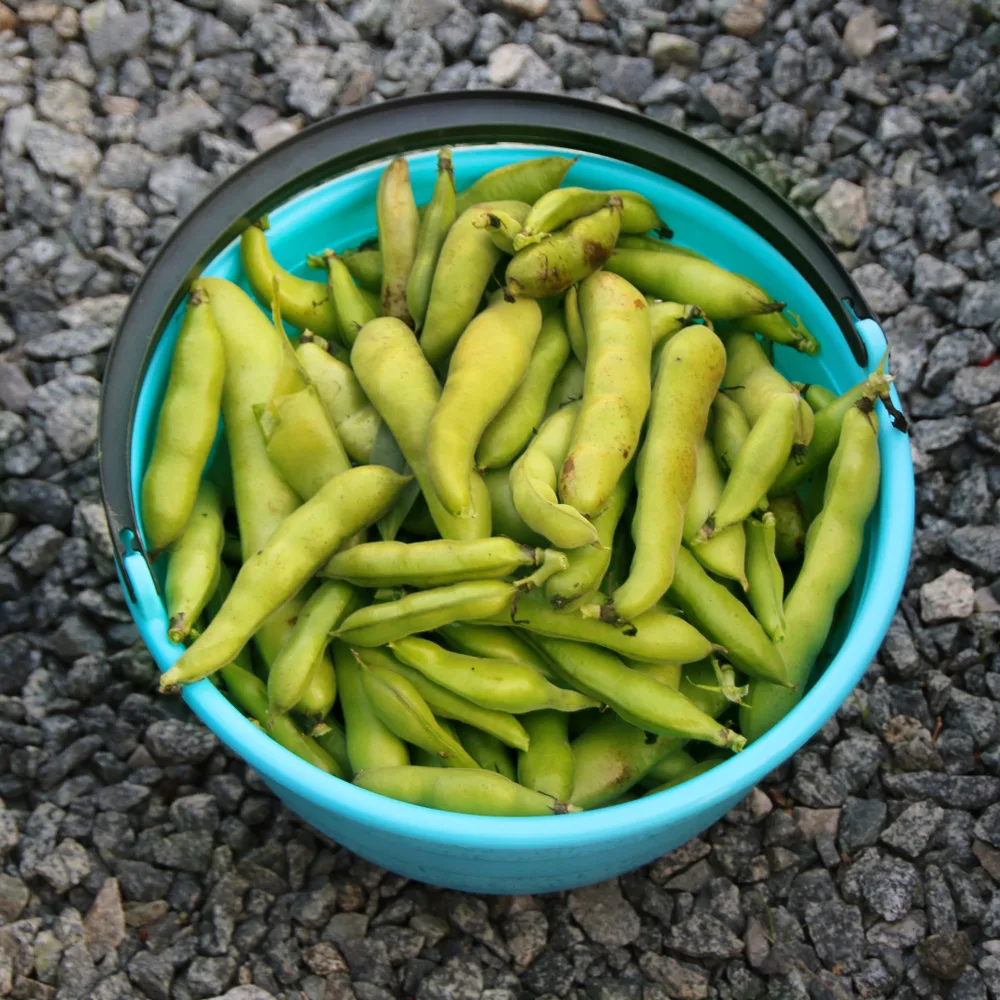
Beans are another high yielding crop to consider. There are a wide range of beans to choose from. So you are sure to be able to find a high yielding variety to grow where you live.
For my area and climate zone, fava beans are great for an abundant June/July harvest, and runner beans and French beans crop abundantly a little later in the year.
I often find I have a glut of green beans late in summer to freeze or to preserve in other ways.
33. Zucchini
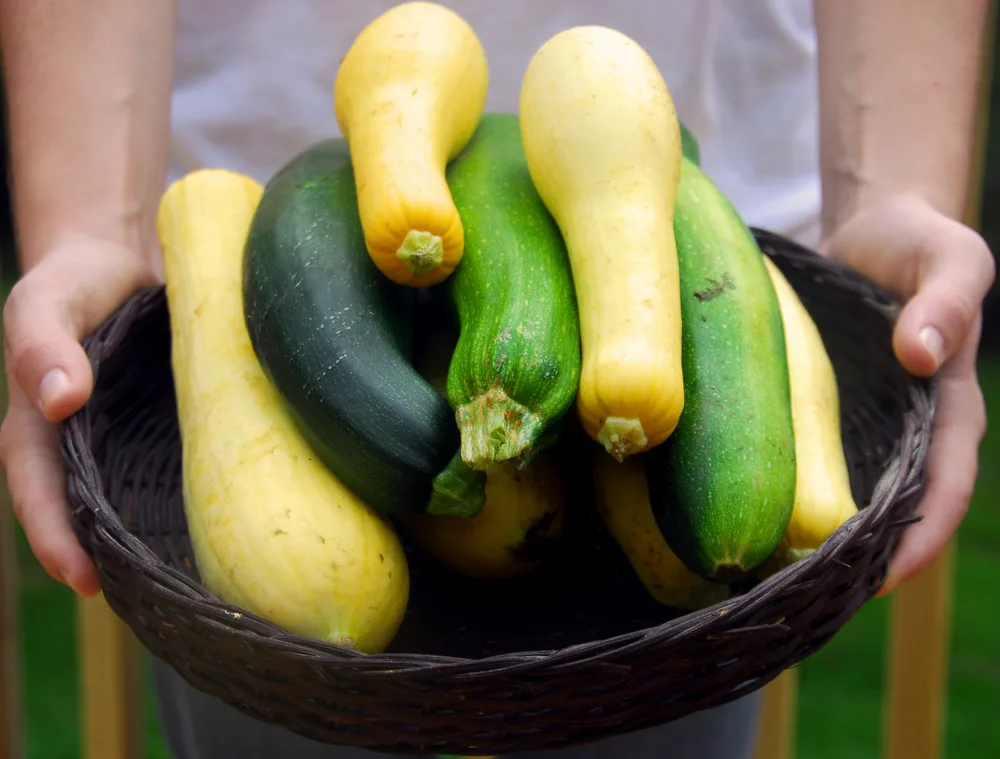
Zucchini/ courgettes are another crop that can do well in my garden over the summer months. Just a small number of plants can provide a bounty of fresh fruits over a long cropping season.
You could even leave them to develop and grow into large marrows, which can be enlivened by using them in a wide range of recipes.
34. Squash
Other summer squash also provide an abundance of fruits where I live in my polytunnel during the warmest months. And these can be stored for use over winter.
Winter squash and pumpkins also grow relatively large for a high-weight yield.
While these crops can take up a lot of space, you can grow them vertically to increase your yield in a given area.
35. Tomatoes
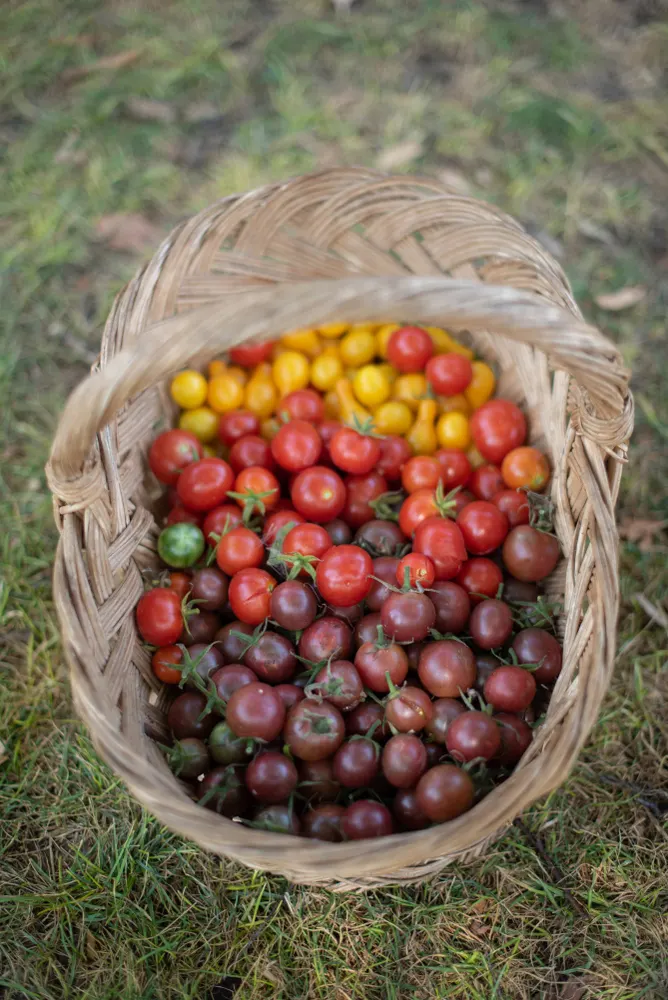
Finally, tomatoes can also be a high yielding option to grow in your garden.
Where I live, it is too cool to grow tomatoes very successfully outdoors. The relatively short growing season means that it is best for me to grow them under cover in my polytunnel.
I maximise the yield I can obtain by cordoning my plants, and by taking steps to help green tomatoes to ripen towards the end of the season. You can also learn how to love green tomatoes with these delicious recipes.
In a good year, however, I get plenty of fresh tomatoes from the small space I can grow them in. And with a warmer summer, they can be even more abundant.
Learn how to properly support your tomato plants, how to adequately fertilize them, and how to hand pollinate them to dramatically increase your tomato harvest.
As mentioned above, which plants will be the most high yielding fruit and vegetable crops for you will depend on your climate and the conditions where you live. But the list above should give you a few pointers as to which crops to try.
Check out this article – 21 Ways to Increase Yield From Your Fruit and Vegetable Garden – for more tips on how to make the most of your space.

Get the famous Rural Sprout newsletter delivered to your inbox.
Including Sunday musings from our editor, Tracey, as well as “What’s Up Wednesday” our roundup of what’s in season and new article updates and alerts.


